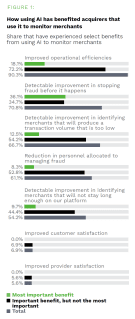PYMNTS Intelligence: How Back-End Innovation Can Reduce Costs While Improving Customer Experience

As competition intensifies among a growing number of players in the financial services market, technological innovation has become an integral part of companies’ missions.
From FinTechs and digital-only banks to insurers and asset managers, firms of all types are using artificial intelligence (AI), machine learning (ML) and other digital technologies to improve efficiency and performance as well as strengthen their customer relationships. More than 75% of companies across all financial services sectors now employ some form of high-performance computing, deep learning or ML to accelerate core computing processes.
The improvements these tools deliver consist of more than simple efficiencies, however. Forty-three percent of respondents to a survey said their AI deployments provide more accurate models, leading to both reduced costs and higher revenues. These outcomes are no surprise, considering AI’s top three use cases: fraud detection, algorithmic trading and conversation, which have seen growth ranging from 200% to 350% in the past year.
In addition, merchant-acquiring banks in a PYMNTS study reported that AI was useful for both detecting fraud and identifying low transaction volumes. Seventy-one percent cited AI as a good fraud-prevention tool, 67% said it helps them identify low-performing merchants and 54% said it enables them to identify merchants that will not stay long enough to be profitable.
This month, PYMNTS Intelligence examines some of the many ways in which back-end innovation is improving engagement and lowering risk for financial institutions (FIs) as well as creating stronger relationships.

Creating a Better Customer Experience
AI and ML provide FIs with the capacity to access an unprecedented quantity of data. As FIs make use of digital tools and channels to grow their customer bases, the larger data sets feed into advanced analytics and ML, improving the ability to predict customer behaviors and needs, even with new customers. Additionally, it may be possible to make these predictions in real time, giving FIs a much more relevant level of engagement with each customer.
The result is a smoother and more frictionless customer experience as well as faster approvals and easier application processes. Advanced analytics can also help FIs measure customer engagement, permitting them to take action before a customer disengages. Personalized messaging, for example, can nudge consumers in a preferred direction or deliver offers based on customers’ habits and financial situations. This tailoring ensures that marketing communications are not simply shotgun attempts to see who might be interested but rather targeted suggestions that educate interested consumers about their options.
AI’s improvements apply to FI staff as well. Relationship managers can enter engagements with customers with a better idea of who they are and what they actually need, thus conveying a greater sense of customers’ value to the FI.
Digital Innovation as Risk Mitigation
That deeper level of data offers FIs a stronger capability of predicting risk and modifying customer engagement accordingly. Beyond the mutual benefit of not encouraging customers to take on financial obligations they cannot handle, the automation of risk assessment also reduces overhead by simplifying application processing and paperwork, saving FIs money in the long run. Customers realize a benefit as well, as the application experience presents lower friction.
AI’s sophisticated screening processes identify habits and behaviors that indicate whether a customer could be at risk of default or late payments, directly lowering FIs’ credit risks. Preapprovals become something more than just a measure of income and credit score and can be aimed at specific purchases based on customers’ circumstances, such as household appliances or vehicles.
The same applies to engagement with commercial customers, such as merchants. Merchant-acquiring FIs can eliminate the need for manual review while simultaneously lowering risk. Acquirers have also reported that AI improves debt collection and reduces the need for manual exception management. According to PYMNTS’ research, 69% of FIs that use AI to monitor merchants on their platforms said it is an important tool, with 56% saying it is their most important merchant-monitoring tool. Forty-nine percent said that data mining is critical to their merchant-monitoring operations, and 35% said the same of rules-based algorithms.
Improved back-end processes powered by AI, ML and analytics have the potential to build on their own successes, with every step generating better data and more relevant engagements that feed back into the same system. By leveraging digital innovation at this level, FIs of every sort can realize lower costs, improved revenues and more satisfied customers across the board.

